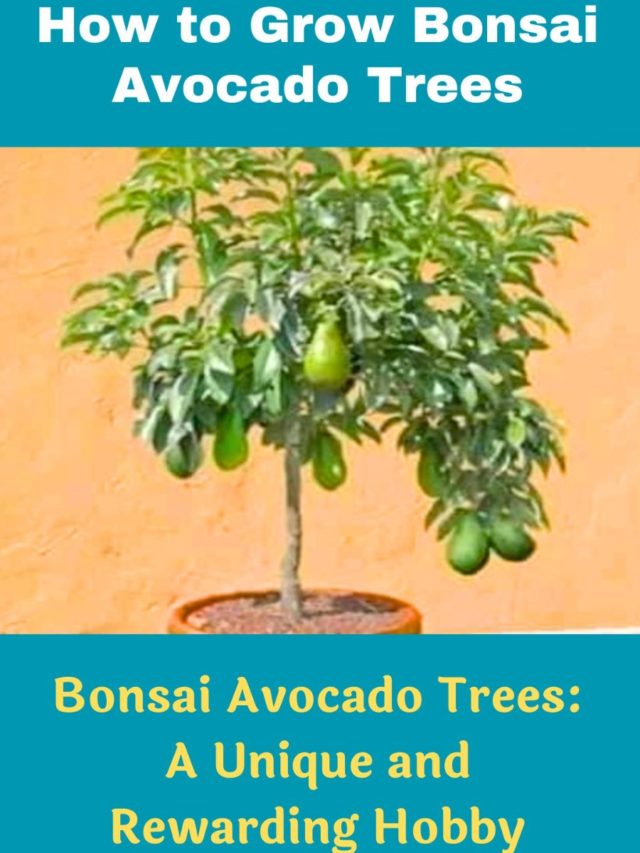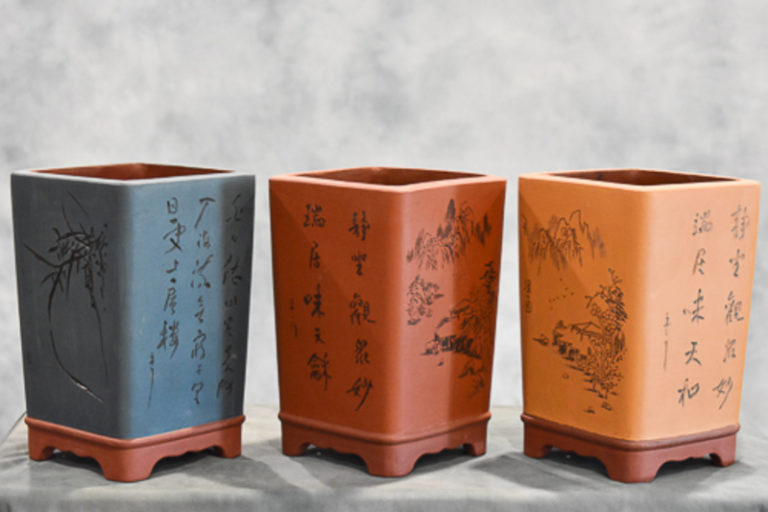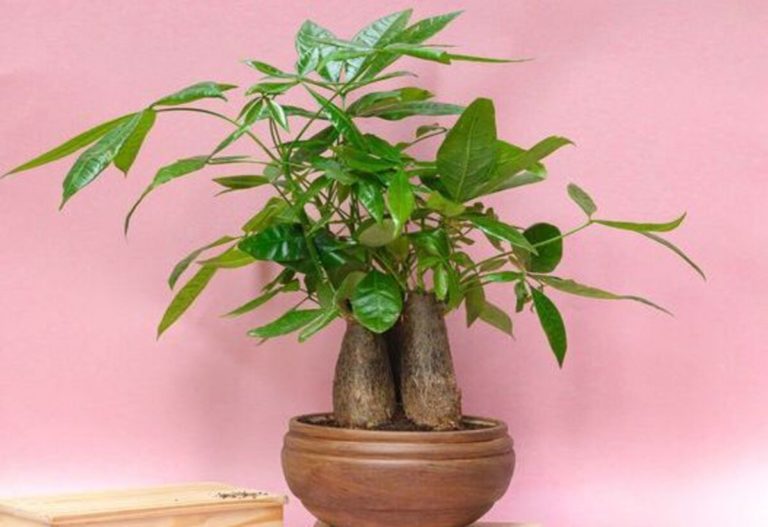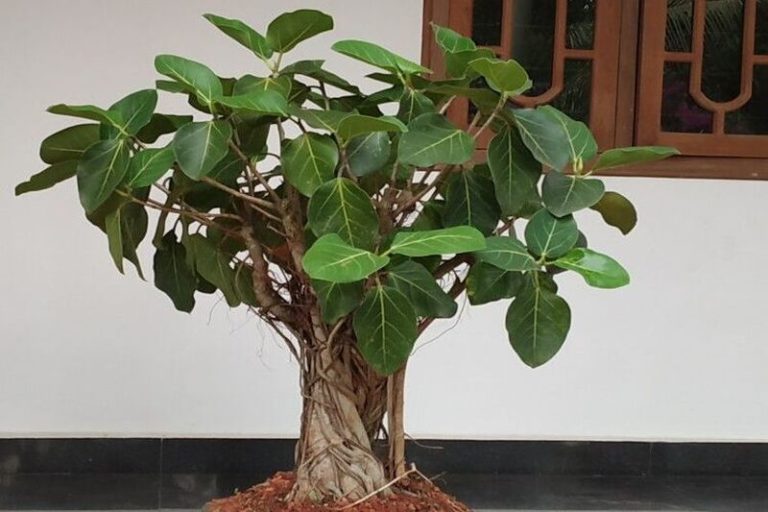Bonsai Avocado Trees: A Unique and Rewarding Hobby
Do you know what Bonsai Avocado Trees are? These little avocado trees are ideal for gardeners who like the aesthetic of Bonsai trees but want to produce their own avocados. In this article, we’ll go over what Bonsai Avocado Trees are, what they’re good for, how to cultivate them, typical difficulties, and popular kinds.
What are Bonsai Avocado Trees?
Bonsai Avocado Trees are tiny avocado trees produced in the Bonsai manner. The process of cultivating miniature trees in small pots is known as bonsai, which is a Japanese word that meaning “placed in a container.” The gardener painstakingly prunes and shapes bonsai trees, which are famed for their delicate branches and foliage.
Bonsai Avocado Trees are not a distinct species of avocado tree; rather, they are a miniature replica of any avocado tree ideal for Bonsai gardening. This implies that Bonsai Avocado Trees, like their full-sized counterparts, may bear fruit.
Characteristics of Bonsai Avocado Trees
Avocado Bonsai Trees have various distinguishing qualities that set them apart from other Bonsai species. Among the most noticeable traits are:
Small size: Bonsai Avocado Trees are typically much smaller than their full-sized counterparts, with most varieties reaching a maximum height of 2-3 feet. This makes them a great option for indoor or small-space gardening.
Intricate branches: Bonsai Avocado Trees have intricate branches that are carefully pruned and shaped to create a miniature version of the full-sized tree. This creates a unique aesthetic value and can be an enjoyable process for gardeners.
Glossy leaves: Avocado leaves are often dark green and glossy, adding to the Bonsai tree’s overall attractiveness. The leaves are also slightly waxy, which aids in moisture retention and protects the tree from harsh weather.
Evergreen: Most avocado varieties are evergreen, which means they retain their leaves throughout the year. This makes them a great option for indoor gardening, as they can provide year-round greenery.
Fruit-bearing: While not all Bonsai Avocado Trees produce fruit, some varieties can produce small, edible fruit. This adds an additional level of interest and utility to the tree, as gardeners can enjoy both the aesthetic and culinary value of their Bonsai creation.
Bonsai Avocado Trees have several unique characteristics that make them an interesting and rewarding option for gardeners. From their small size and intricate branches to their glossy leaves and fruit-bearing potential, Bonsai Avocado Trees offer a range of benefits for those looking to add a little green to their lives.
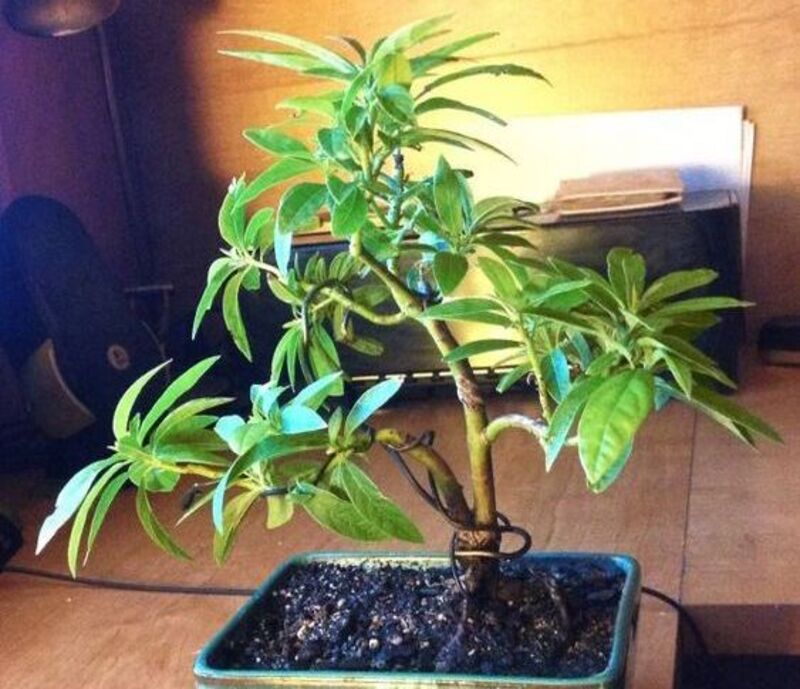
Benefits of Growing Bonsai Avocado Trees
There are several benefits of growing Bonsai Avocado Trees:
Nutritional value: Healthy fats, fiber, and vitamins make avocados nutritious. Your Bonsai Avocado Tree may produce pesticide-free avocados.
Aesthetic value: Bonsai Avocado Trees are a delicious addition to any indoor or outdoor setting, and they can serve as a conversation piece. The delicate branches and leaves of these small trees are the result of meticulous shaping by the gardener. They can liven up a room and provide for interesting conversational fodder.
Therapeutic benefits: Therapeutic advantages of gardening include stress reduction and enhanced mental wellness. If you’re looking for a way to unwind and get in touch with nature, consider taking up Bonsai Avocado Tree care as a pastime.
Accessibility: Bonsai Avocado Trees can be grown in small spaces, making them a great option for urban gardeners or those with limited outdoor space. They can also be grown indoors, provided they receive sufficient sunlight.
Cost-effective: Purchasing avocados from the supermarket may be costly, especially if you consume them frequently. By cultivating your own Bonsai Avocado Tree, you may save money and always have access to fresh, homegrown avocados.
Growing Bonsai Avocado Trees offers a range of benefits, from their nutritional value to their aesthetic and therapeutic benefits. With a little care and attention, these miniature trees can thrive and provide you with delicious fruit for years to come.
How to Grow Bonsai Avocado Trees
Here are the steps to grow a Bonsai Avocado Tree:
Choose the right type of avocado tree: Not all types of avocado trees are suitable for Bonsai cultivation. Look for varieties that are naturally small and have a slow growth rate, such as the Wurtz avocado.
Select the appropriate container and soil: Bonsai Avocado Trees should be grown in a small container, such as a bonsai pot, with well-draining soil. The pot should be shallow and wide, as opposed to deep, to encourage a shallow root system.
Prune and shape the tree: Bonsai trees are known for their intricate shape and size. Use sharp pruning shears to trim the branches and leaves of your Bonsai Avocado Tree to create the desired shape.
Care for your tree: Water your Bonsai Avocado Tree regularly, but be careful not to overwater it. Avocado trees like moist, but not wet soil. Fertilize your tree with a balanced fertilizer every four to six weeks.
Types of Bonsai Avocado Trees
There are several types of avocado trees that are suitable for Bonsai cultivation. Some of the most popular varieties include:
Hass avocado: The Hass avocado tree is one of the most common types of avocado trees used for Bonsai cultivation. It produces small, tasty fruit and is known for its dark green, glossy leaves.
Fuerte avocado: The Fuerte avocado tree is another popular variety for Bonsai cultivation. It has a more upright growth habit and produces medium-sized fruit with a smooth, buttery texture.
Bacon avocado: The Bacon avocado tree is a smaller variety that is perfect for Bonsai cultivation. It produces medium-sized fruit with a mild flavor and is known for its dense foliage.
Gwen avocado: The Gwen avocado tree is renowned for its attractive, glossy foliage and buttery, creamy fruit. In the 1980s, a relatively new type of this plant was produced.
Pinkerton avocado: The Pinkerton avocado tree produces medium to large fruit with a rich, nutty flavor. It has a compact growth habit and is well-suited for Bonsai cultivation.
While selecting an avocado tree for Bonsai development, it is vital to examine variables such as the tree’s size, the fruit’s flavor, and the tree’s growth behavior. Certain strains may be better suited for indoor production, but others may need more outdoor area. The type you choose will ultimately rely on your particular tastes and the local growth circumstances.
Common Problems with Bonsai Avocado Trees
Here are some common problems that you may encounter when growing Bonsai Avocado Trees:
Overwatering and underwatering: Avocado trees are sensitive to water and can suffer from root rot if they are overwatered. On the other hand, underwatering can cause the leaves to turn brown and dry.
Pests and diseases: Pests and diseases such as spider mites, thrips, and root rot can harm avocado plants.
Nutrient deficiencies: Avocado trees can suffer from nutrient deficiencies if they are not fertilized properly.
How to Care and Maintenance for Bonsai Avocado Trees
Caring for and maintaining a Bonsai Avocado Tree requires a combination of attention to detail and consistency. Here are some tips to help you care for your Bonsai Avocado Tree:
Watering: Avocado trees require consistent moisture, so it’s important to water your Bonsai tree regularly. Check the soil every day and water when it feels dry to the touch. Be sure not to overwater, as this can cause root rot.
Fertilizing: Avocado trees require regular fertilization to thrive. Use a balanced fertilizer every two weeks during the growing season (spring and summer) and reduce the frequency during the dormant season (fall and winter).
Pruning: Pruning is an essential aspect in Bonsai cultivation, as it helps to preserve and shape the tree’s structure. Employ clean, sharp shears to cut away dead or overgrown branches and leaves.
Soil: Avocado plants demand nutrient-rich soil that drains properly. Use a soil mixture formulated particularly for Bonsai development, or construct your own with peat moss, sand, and perlite.
Light: Avocado trees require plenty of sunlight to grow and thrive. Place your Bonsai tree in a sunny location, preferably near a south-facing window or under a grow light.
Temperature and Humidity: Avocado trees prefer warm temperatures and high humidity. Keep your Bonsai tree in a location that is between 60-85°F and provide humidity using a humidity tray or misting the leaves regularly.
Repotting: Avocado trees should be repotted every 2-3 years to ensure optimal growth. Repot in the spring using a slightly larger pot and fresh soil.
Bonsai Avocado Tree Care Sheet
| Aspect | Care Tips |
| Watering | Always water the soil. Water when the land is dry. Overwatering causes root rot. |
| Fertilizing | For good spring and summer growth, use a balanced fertilizer every two weeks. |
| Pruning | Regular pruning keeps the tree’s form. Employ sharp, clean scissors to cut dead or overgrown branches and leaves. |
| Soil | Avocado plants prefer nutrient-rich, well-drained soil. Employ a bonsai soil mix or combine peat moss, sand, and perlite. |
| Light | Bonsai Avocado Plants need 6-8 hours of sunshine daily. Put them in a bright spot, preferably near a south-facing window or beneath a grow lamp. |
| Temperature | Avocado trees like 60-85°F (15-29°C). Keep them away from extreme temperatures. |
| Repotting | Spring repotting with a slightly bigger container and fresh soil every 2-3 years. Trim healthy and sick roots. |
By according to these care and maintenance guidelines, you can guarantee that your Bonsai Avocado Tree stays healthy and bright for many years. You may make a lovely and distinctive addition to your house or garden with time and care.
Conclusion
Growing Bonsai Avocado Trees can be a fun and rewarding hobby for gardeners of all levels. These miniature trees offer a unique aesthetic value and can even produce delicious fruit. With the right care and attention, your Bonsai Avocado Tree can thrive for years to come. So why not try your hand at Bonsai cultivation and add a little green to your life?
FAQ:
Q: Can I grow a Bonsai Avocado Tree indoors?
A: Yes, you can grow a Bonsai Avocado Tree indoors. They need plenty of sunlight and humidity, so placing them near a south-facing window or under a grow light and using a humidity tray or misting the leaves regularly can help.
Q: How often should I water my Bonsai Avocado Tree?
A: You should water your Bonsai Avocado Tree regularly and keep the soil consistently moist. Check the soil every day and water when it feels dry to the touch.
Q: How often should I fertilize my Bonsai Avocado Tree?
A: To grow, avocado trees require frequent fertilizer. Apply balanced fertilizer every two weeks during the growing season.
Q: How much sunlight do Bonsai Avocado Trees need?
A: Bonsai Avocado Trees require plenty of sunlight, ideally 6-8 hours per day. Place them in a sunny location, preferably near a south-facing window or under a grow light.
Q: Can I prune my Bonsai Avocado Tree?
A: Yes, pruning is an important part of Bonsai cultivation. Use sharp, clean scissors to remove dead or overgrown branches and leaves. This will help shape and maintain the tree’s structure.
Q: What kind of soil should I use for my Bonsai Avocado Tree?
A: Avocado plants demand nutrient-rich soil that drains properly. Use a soil mixture formulated particularly for Bonsai development, or construct your own with peat moss, sand, and perlite.
Q: How often should I repot my Bonsai Avocado Tree?
A: Avocado trees should be repotted every 2-3 years to ensure optimal growth. Repot in the spring using a slightly larger pot and fresh soil.
Q: Can Bonsai Avocado Trees produce fruit?
A: Yes, Bonsai Avocado Trees can yield fruit, albeit it may take many years and the fruit will likely be smaller than those of a mature avocado tree.
Also Read:
Alberta Spruce Bonsai: The Perfect Tree for Bonsai Enthusiasts


